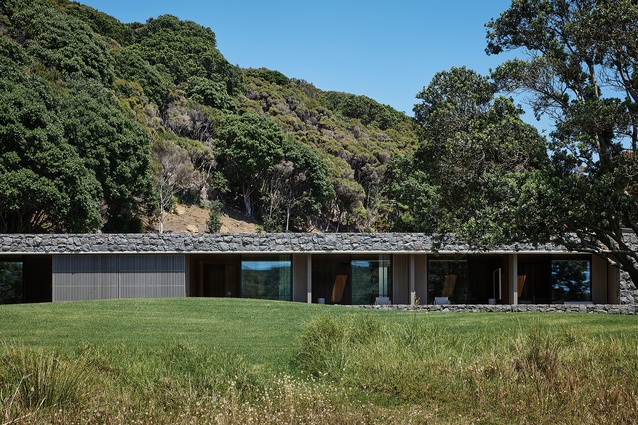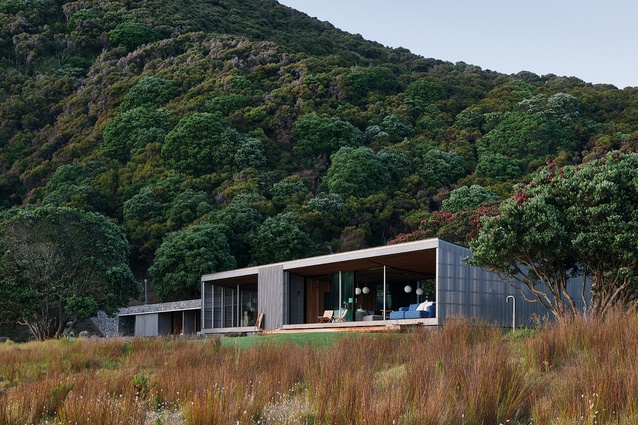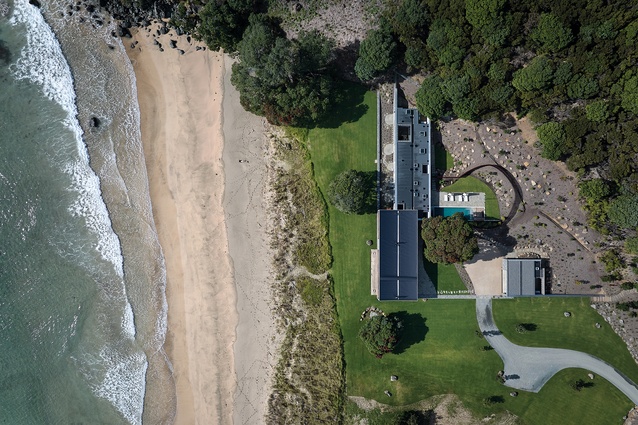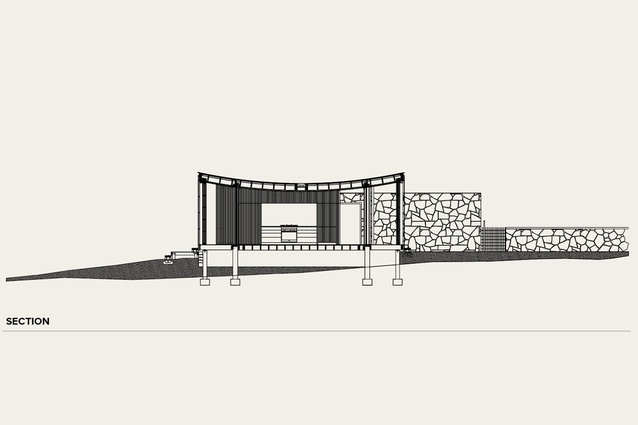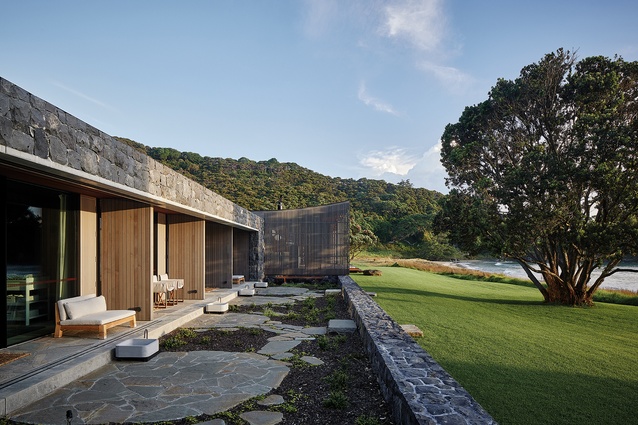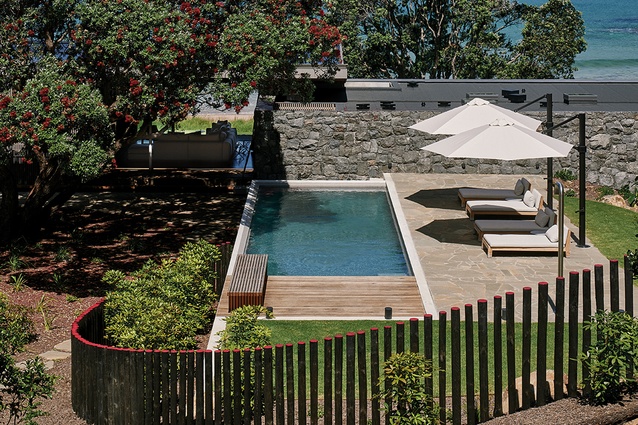Levity and gravity
Natural beauty is always a challenge to architectural empathy. Designing a building in a spectacular place, especially in a remote location where seclusion gives ample licence to indulgence, is a test of temperament as well as of talent.
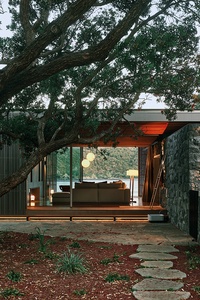
There are obvious questions to be answered — where exactly should the building go, and how big should it be? — but an architect is also required to take up a position on an affective spectrum that ranges from deference to dominance. Making choices entails renouncing temptations; an architectural response to a beautiful site is inevitably an essay in appropriateness.
For more than two decades, the practice led by Lance and Nicola Herbst has demonstrated a sure touch in harmonising buildings and their host sites. Since Herbst Architects’ formation in 2000, many of the firm’s commissions have been for houses in coastal environments, as sensitive to human impact as they are desirable to development. These places present challenging tests of architectural exegesis: what should be rendered unto Caesar (the client) and what should be rendered unto God (nature)? Few firms can match Herbst Architects’ ability in reconciling the obligations demanded by a client and those owed to a site. And few firms have demonstrated such command of the architectural art of choreographing the relationship between inside and out, between being in a building and being at the beach.
It was one of the most celebrated of Herbst Architects’ coastal houses — ‘Under Pōhutukawa’ (2015), a beach house on Auckland’s west coast, named for its placement among a stand of mature Metrosideros excelsa — that attracted the attention of the new owners of a substantial property in the Far North of Aotearoa. The property, which abuts a horseshoe indent — Omata bay — in a headland on Northland’s benign eastern coast, came with an existing house, an old home near the beach, close to the escarpment at the south end of the bay. There was also a newer house, a hundred metres distant, on the hill to the west. It was always the case that the house by the beach would be replaced with a new building. (The house on the hill has been reworked by Herbst Architects as guest accommodation.)
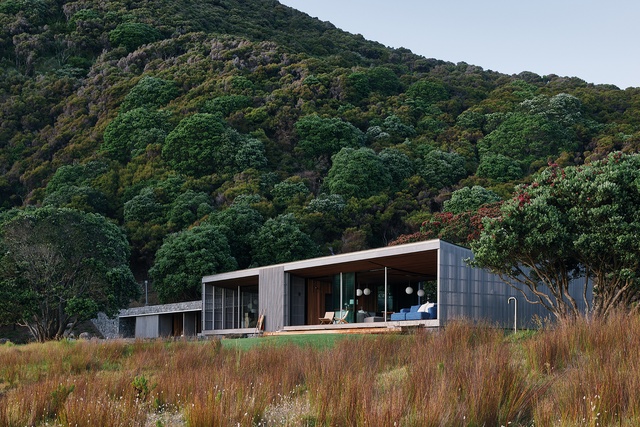
Herbst Architects’ Omata Beach House is a further step in an architectural direction signalled by the practice’s Awana Beach House (2019) on Aotea Great Barrier Island. The architects had become known for their ‘sticky’ architecture — modestly sized, lightweight timber beach houses that clearly expressed the methods and materials of their assembly. These buildings struck a chord, among peers and public alike, because they seemed to lie firmly in what architect and critic David Mitchell called the ‘fabricator’ or ‘carpenter’ tradition of New Zealand domestic architecture. More than that, they were self-consciously interpretations, or interrogations, of that most-culturally resonant New Zealand building type: the bach.
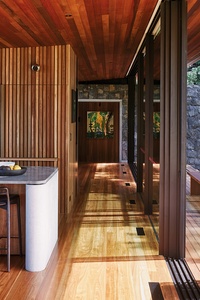
It wasn’t quite this simple, of course. Herbst Architects’ work, even in the firm’s early days, often combined stones with sticks. Gabion walls of river rocks ran alongside and, at times, through otherwise ephemeral-looking timber houses, imbuing the houses with textural depth as well as anchoring heft. But the balance in the firm’s work between thin and thick, and the relationship in their houses between base and superstructure, has been changing. In part, as the Herbsts note, this is because the caution that now permeates New Zealand’s building regulatory regime has served to make buildings fatter. (A thicker building envelope is one response to construction industry shortcomings.) In part, it’s because Herbst Architects is now being asked to design larger houses requiring more support. And it’s also because the Herbsts’ already-strong inclination to ground their buildings has been encouraged by encounters with work by contemporary practitioners who are inheritors to the traditions of the foundational architecture of the Western canon. During travels in Greece, “we saw how buildings worked with the land: how they bedded in”, Lance Herbst says. “Now, we’re cutting into the landscape.”
The Omata Beach House sits on a stone platform — “a kind of site frame”, Lance Herbst calls it — formed by the wall on the north side of the house and the sea wall on the east side. The house, Herbst says, “is a plinth with a lightweight top”: in other words, “a little Acropolis by the bay”. The 360m² house is single level, long and low, and driftwood-coloured. “We wanted it to seem like it had grown out of the land.” Tucked out of sight from the nearest neighbours, the house is located as near to the sea as is viable — six metres above the full-tide level — and positioned to preserve several large pōhutukawa. Herbst Architects is abstemious with motif but, at Omata bay, it has referenced pōhutukawa in the pattern on glass doors, the stamen-red taps of the sand-removing footbaths in the lawn, and the tips of the palisade of poles that screens the swimming pool on the house’s west side.

In form, the house is two rectilinear pavilions: one for sleeping, one for living. The basalt-clad dormitory wing, at the house’s south end, steps back from the living pavilion to accommodate the line of seaside terraces that serve the four bedrooms. The bedrooms also have sheltered courtyards to the rear; all of the rooms have views out to the bay. The living pavilion includes a lanai, the indoor-outdoor porch that has been a favourite, and well-nigh defining, characteristic of the Herbsts’ beach architecture. This building element, with its sliding doors and folding screens, is the clearest design expression of the architects’ understanding that inhabiting a beach house, irrespective of the quantum of its cost and the level of its amenity, should, to some extent, be a hands-on experience. (Owners of a Herbst beach house must be prepared to be the building’s chief operating officers.)
The pavilion housing the lanai and the living areas is topped by a roof with a gentle concave curve that lowers to hold space in the centre and rises to free it at the edges. The shape of the roof’s drape is a sensuous contrast to the linearity of the house’s base — Bedouin grace, perhaps, above Classical gravitas. This roof is deliberately performative design — architectural acrobatics with an impressive degree of difficulty and consequent quotient of interest. “Everyone’s doing arches at the moment,” Lance Herbst says. “But we wanted to try something different — explore a shape that would bring character to a pavilion.”
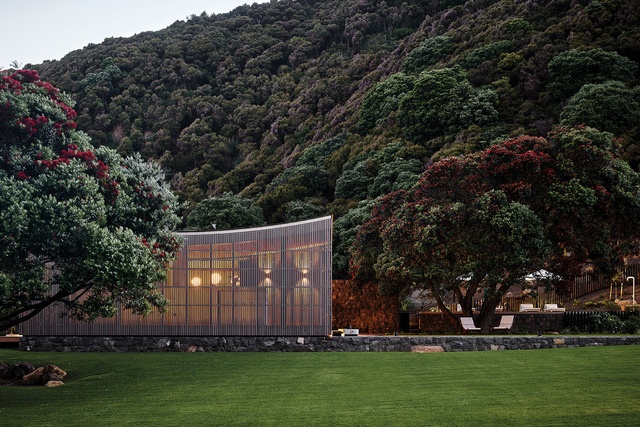
“The house is not meant to feel grand,” Herbst says. “It’s meant to be manageable.” So, instead of spatial profligacy: painstaking detailing, finely calibrated proportions, and disciplined material selection — cedar and stone cladding, concrete and aluminium, spotted gum interior linings. “Making this house was not building,” says contractor Duncan Bell. “It was making furniture.”
Herbst Architects had the freedom to be holistic in the design of the house, Nicola Herbst taking responsibility for the built-in and free-standing wardrobes, shelves and cupboards. In marrying the sensibilities of the holiday with the attributes of a home, the entire design walks a careful line between calmness and complexity, serenity and stimulus. For its inhabitants, the Omata Beach House is a very cool cocoon. For the building’s designers, it’s the latest fixing of a point of equilibrium on the architectural spectrum that stretches between the poles of levity and gravity.


